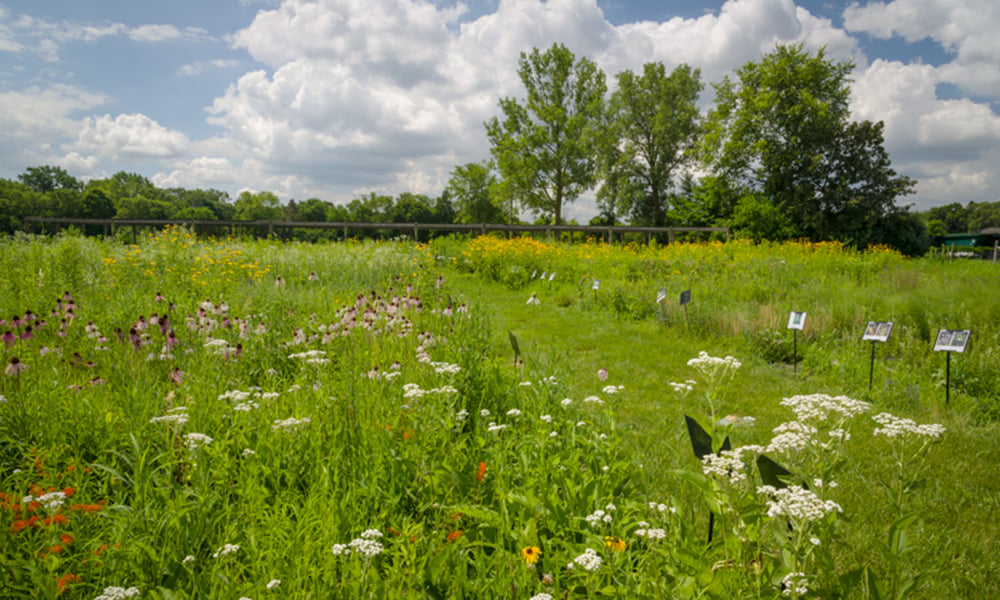
Somewhere, in a relatively small section of Blackwell Forest Preserve nestled along Mack Road, lies a special place where native plants grow.
It’s a place supported by a dedicated group of staff and volunteers who tenderly care for the plants, and it helps make possible the restoration of natural areas in DuPage forest preserves.
This place is the Forest Preserve District’s Blackwell native plant nursery.
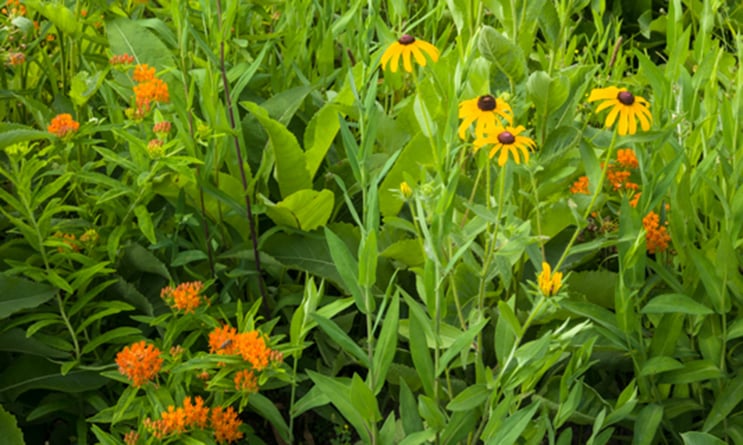
Native plants bloom in Blackwell's nursery.
The nursery’s primary purpose is to produce seeds from plants that are the closest genetically to what grows naturally in this area, called local genotype seed production. That’s important because those plants are adapted to our climate and geology and therefore have greater growing success. (As an added bonus, they’re most attractive to our local pollinators, too.)
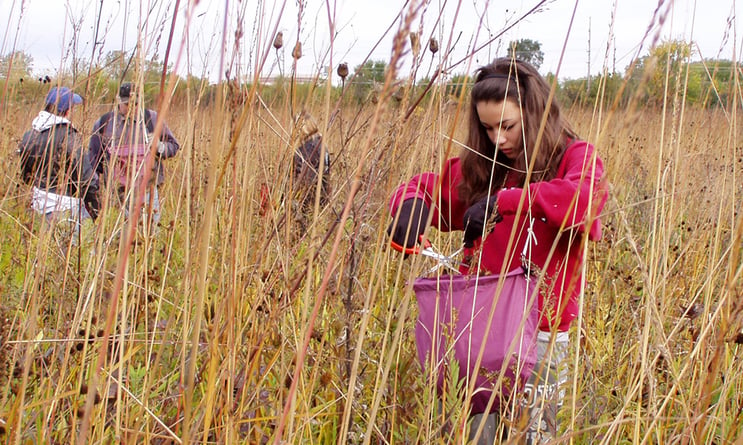
Volunteers collect seeds from native plants.
All the plants in the nursery are grown from seed collected in remnant areas throughout DuPage County. The seeds are used to augment and increase biodiversity in some of the Forest Preserve District’s high-quality natural areas and supplement Districtwide projects.
“I take great pride in the fact that we’re preserving these resources and producing seeds from our local genotype rather than purchasing seed from different origins,” said Natural Resources’ Stewardship Program Coordinator Cindy Hedges, a nursery employee with more than 20 years experience.
“I’m proud that we’re able to sustain the health of rarer populations, like the short green milkweed, because some species are on the verge of disappearing from the county,” Hedges said.
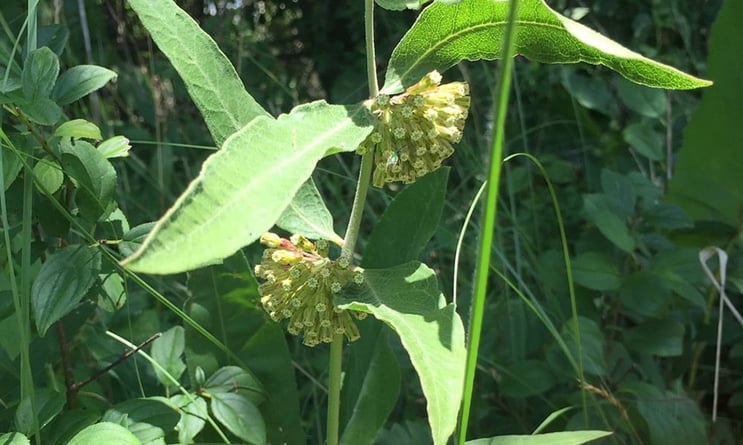
Short green milkweed (Asclepias viridiflora).
How the Nursery Got its Roots
Back in 1966, the Forest Preserve District purchased this property to create a tree and shrub nursery based on its soil, water and drainage assessments. Soon after, a deep pond was dug for a dripline irrigation system for the majority of plants at the nursery. (Currently that 12-acre planting area has between 5,000 and 5,500 trees and 50 to 60 shrub species.)
In 1994, former District plant ecologist Wayne Lampa and volunteer Mel Hoff (along with a hefty dose of volunteer enthusiasm) decided to also grow forbs, grasses and sedges at the site.
At its first “planting party,” District staff and 20 volunteers planted 6,000 plugs from 38 species of prairie and savanna plants in 10 beds. Soon after those early volunteer planting parties, a formal volunteer program was created to support the site.
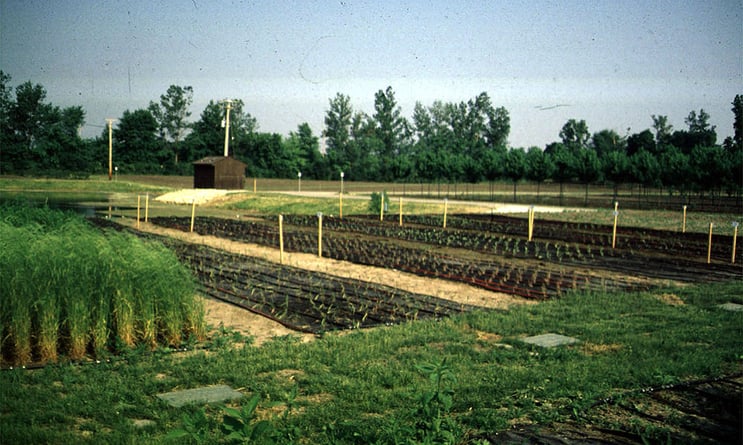
This file photo shows what the nursery looked like in the 20th century.
Today the native plant nursery consists of 35 planting beds and 90 different species of flowers, sedges and grasses.
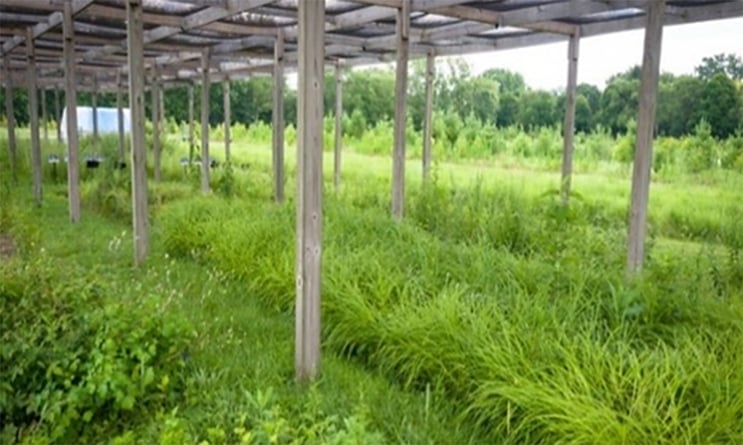
Six of the planting beds have shade cloth cover that mimics a tree canopy for species that naturally occur in those conditions, like purple milkweed, shooting star, and woodland sedges.
Realizing the need to accommodate more woodland plants — and in keeping with our mission to restore native landscapes — District crews began restoring a nearby degraded 9-acre area. The area was cleared of woody growth, treated with a controlled burn and planted with a mix of 30 native species. It now serves as a refuge for rescued transplants from building demolitions and roadside expansions adjacent to high-quality natural areas and supports over 140 herbaceous native species.
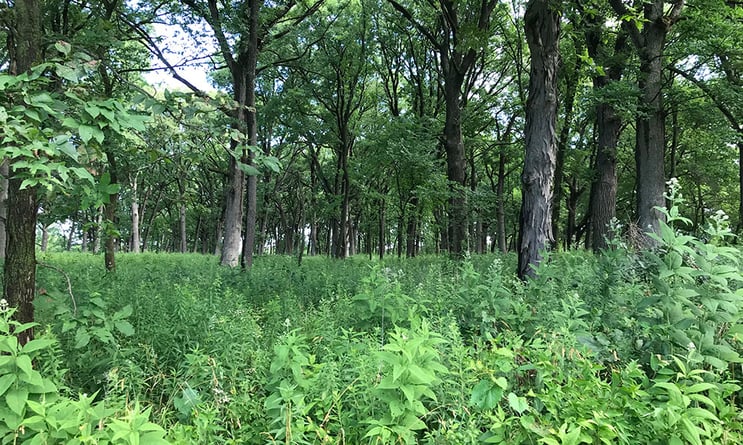
Certain plants prefer the shade of large trees.
Ecologists next took advantage of an existing swale on the site for more wetland plant production, including two sedges — tufted sedge and prairie straw sedge — and three herbaceous plants — tufted loosestrife, prairie obedient plant and marsh marigold.
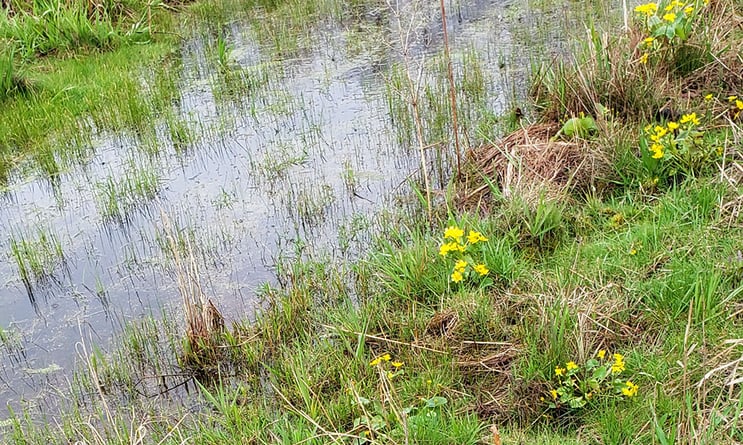
Other species prefer a wetter environment.
In 2015, a 256-square-foot hoophouse was built for propagation, repotting, and transplanting thanks to a generous donation from the Friends of the Forest Preserve District of DuPage County.
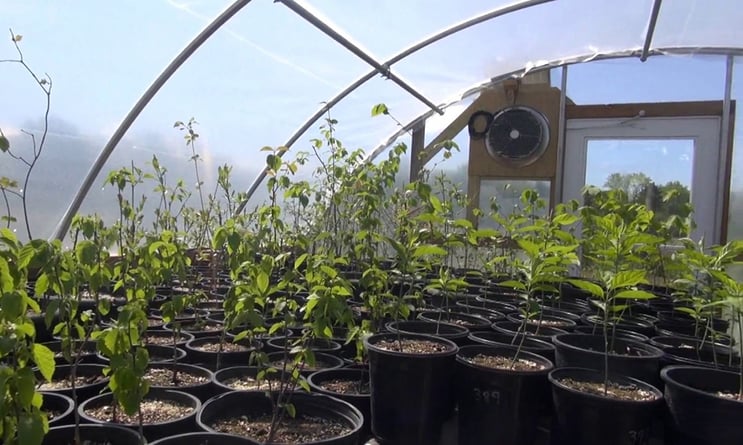
Donations funded the construction of a hoophouse.
Managing the nursery, which operates April through November, is a Herculean effort that involves watering, weed management — hand weeding, herbiciding, and, when conditions are right, controlled burns — and seed collection, most of which is done by hand.
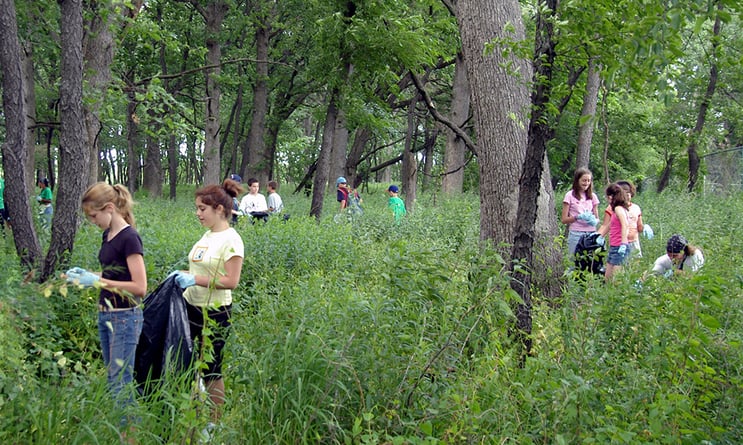
Managing the nursery is labor intensive.
To get an idea of how much seed the nursery produces each year and how that translates to DuPage County’s natural areas, let’s use little bluestem as an example. It yields an average of 18.5 pounds of seed a year (240 pounds have been collected since the nursery was established). Considering there are over 141,000 seeds in a pound, the nursery’s impact on DuPage County’s natural areas is astounding.
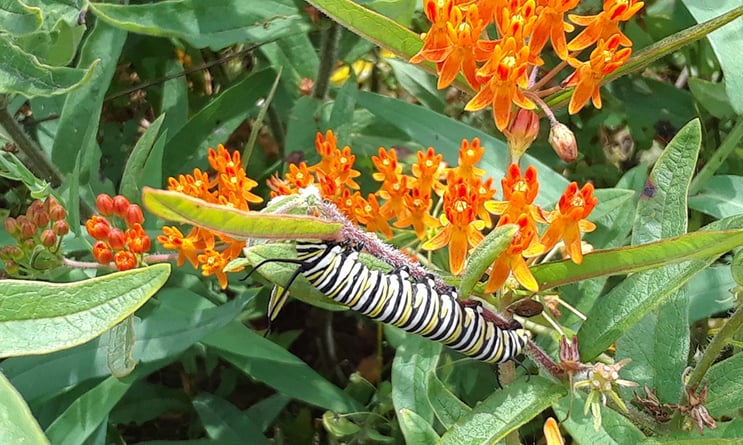
The nursery propagates six species of milkweed, a key species in the life cycle of the monarch butterfly.
These accomplishments would not be possible without the help of the Forest Preserve District’s volunteers, who participate in more than 30 nursery workdays and donate more than 7,000 total volunteer hours a year.
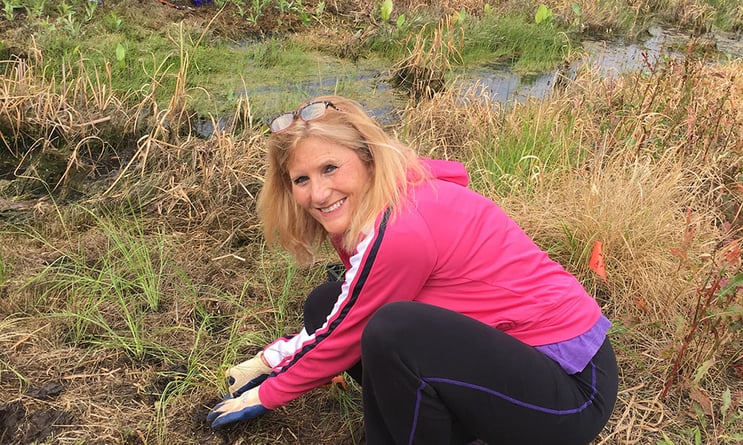
Volunteers are a key factor to the nursery's success.
During native plant nursery volunteer workdays and public tours, visitors and volunteers can see the plants up close and learn how to incorporate natives into their home landscapes.
“I’m extremely pleased that we’re able to give people an opportunity to see what the plants look like and learn how they grow and behave in a planted situation so they can take home ideas on how to incorporate native plants into their home landscapes,” Hedges concluded.
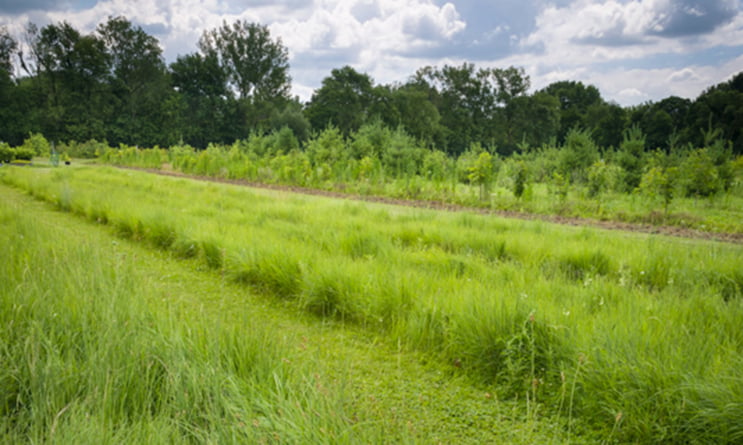
The nursery offers easy access to the plants in a garden-like setting with mowed and surfaced walkways.